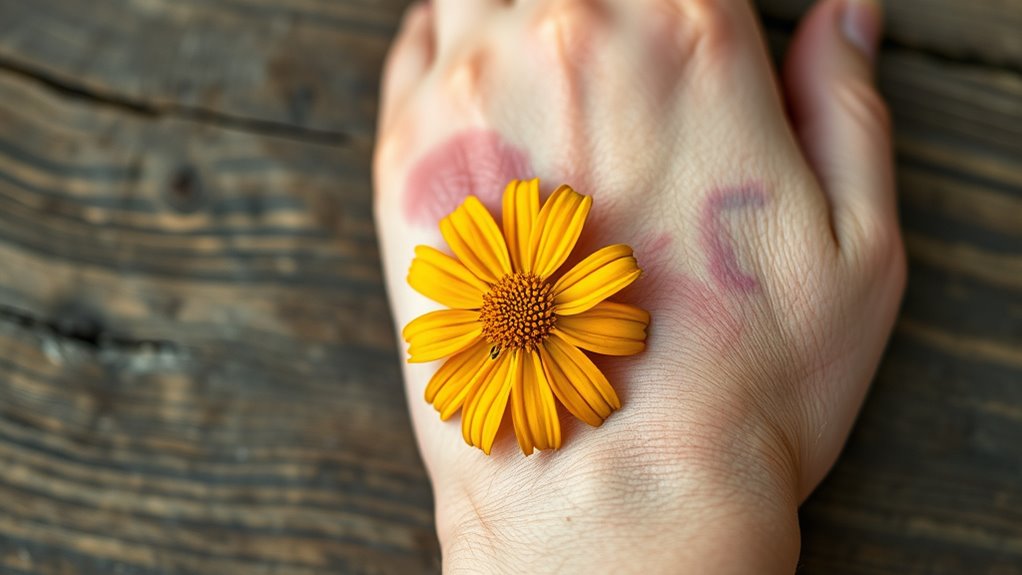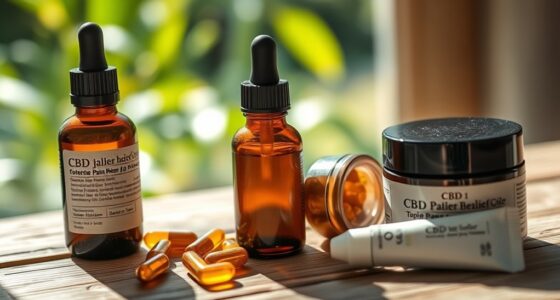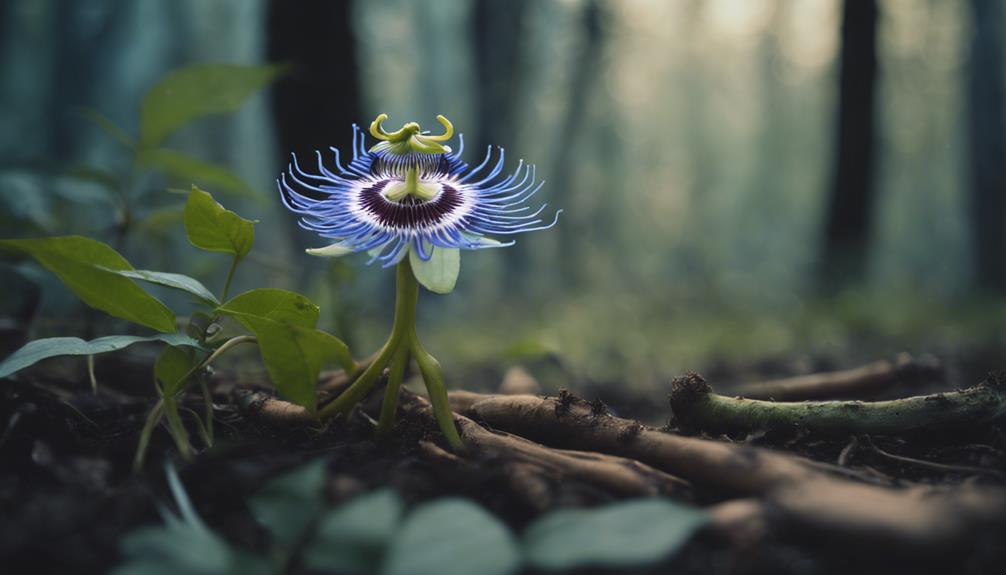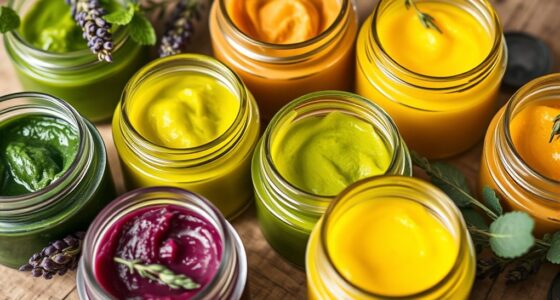Arnica is popularly used as a natural way to reduce bruising and pain, with many claiming it helps heal faster and lessens swelling. However, scientific studies show mixed results, and evidence isn’t conclusive about its effectiveness. While some people find arnica soothing, it shouldn’t replace other treatments like cold compresses or elevation. To discover how well arnica works and get expert tips, keep exploring this topic.
Key Takeaways
- Arnica is commonly used for bruises due to its anti-inflammatory properties, but scientific evidence on its effectiveness is mixed.
- Applied topically to intact skin, arnica may help reduce swelling and speed healing, but should not be used on broken skin.
- Studies show arnica can provide some relief and support natural healing, though it is not a guaranteed cure for bruising.
- Proper bruise care involves cold compresses, elevation, and gentle herbal remedies, with arnica as a complementary treatment.
- Always perform a patch test before use and follow recommended guidelines, as arnica may cause skin irritation or allergic reactions.

When you get a bruise, your body naturally works to heal the damaged blood vessels, often leaving behind discoloration and swelling. While your body does its job, you might want to speed up the process or reduce discomfort with home remedies or herbal treatments. Arnica is a popular natural option people turn to, but it’s important to understand whether it’s truly effective or just a myth.
Many believe that applying arnica gel or ointment can markedly reduce bruising and inflammation. This idea stems from traditional herbal treatments that have been used for centuries to treat injuries. The principle is that arnica contains compounds called sesquiterpene lactones, which are thought to have anti-inflammatory properties. When used properly, some users report that arnica helps minimize swelling and speeds up healing, making it a common choice among those seeking natural pain relief. However, scientific evidence is mixed. Some studies suggest arnica can be beneficial for minor injuries, while others find little to no difference compared to placebo.
Arnica may help reduce bruising, but scientific evidence remains mixed.
If you’re considering using herbal treatments like arnica, it’s essential to follow proper application methods. You should avoid applying arnica directly to broken skin, as it can cause irritation or allergic reactions. Instead, use it as a topical treatment on intact skin, and always test a small area first to check for sensitivity. Many people incorporate arnica into their home remedies routines, combining it with cold compresses or elevation to further reduce swelling. The cold compress helps constrict blood vessels immediately after injury, while arnica may help with the subsequent inflammation. Additionally, using proper dosage and avoiding overuse can help prevent potential adverse effects.
While arnica is widely regarded as a natural remedy, it’s not a magic cure. It’s best used as a complementary approach alongside other home remedies rather than a standalone solution. For example, wrapping the bruise with an elastic bandage or keeping your head elevated can also help minimize swelling. If you prefer herbal treatments, herbal teas like chamomile or ginger can be soothing and anti-inflammatory as well, although their direct impact on bruising is less proven.
Frequently Asked Questions
Can Arnica Be Used Safely on Broken Skin?
You might wonder if arnica can be used safely on broken skin. It’s important to know that topical safety is key; applying arnica directly to broken skin isn’t recommended. Doing so could interfere with skin healing or cause irritation. For safety, use arnica only on unbroken skin to support healing and avoid complications. Always follow product instructions or consult a healthcare professional before using arnica on any skin injury.
How Quickly Does Arnica Work to Reduce Bruising?
You might wonder how quickly arnica works to reduce bruising. Applying it promptly, ideally within the first 24 hours, can help speed up healing. The earlier you start, the more likely you’ll notice a reduction in bruise visibility within a few days. Consistent application according to instructions enhances its effectiveness, so don’t delay. Patience is key, but timely use can make a noticeable difference in your recovery.
Are There Any Known Allergic Reactions to Arnica?
You might wonder if arnica causes allergic reactions. While it’s generally safe, some people with herbal sensitivities or allergies could experience arnica allergic reactions, like skin irritation or swelling. It’s important to do a patch test before using arnica topically. If you notice any adverse effects, stop using it immediately and consult a healthcare professional. Being cautious helps prevent unwanted reactions and guarantees safe use.
What Is the Proper Dosage of Arnica for Bruises?
You should follow the recommended dosage on homeopathic preparations for bruises, as these natural remedies vary in strength. Typically, you might take arnica 30C or 200C, but it’s best to start with small doses, like one pellet every few hours, and adjust as needed. Always consult a healthcare professional before using arnica, especially if you’re pregnant, nursing, or taking other medications, to guarantee safe and effective use.
Does Arnica Interact With Any Medications?
You should be aware that arnica can interact with certain medications, especially blood thinners and anti-inflammatory drugs. These medication interactions could increase bleeding risk or affect how your medications work. Always consult with a healthcare professional before using arnica, especially if you’re on other medications. This guarantees herbal safety and helps you avoid any adverse effects or unexpected interactions. Your doctor can guide you on safe use and proper dosages.
Conclusion
So, is arnica truly a trustworthy remedy for bruises? While scientific support is still somewhat sparse, many swear by its soothing, natural power. If you choose to try it, remember to proceed with patience and proper precautions. Trust in its time-tested tradition, and you might just find a gentle, glorious glow of relief. Embrace the ease of natural healing, and let arnica’s gentle grace guide your recovery journey.










